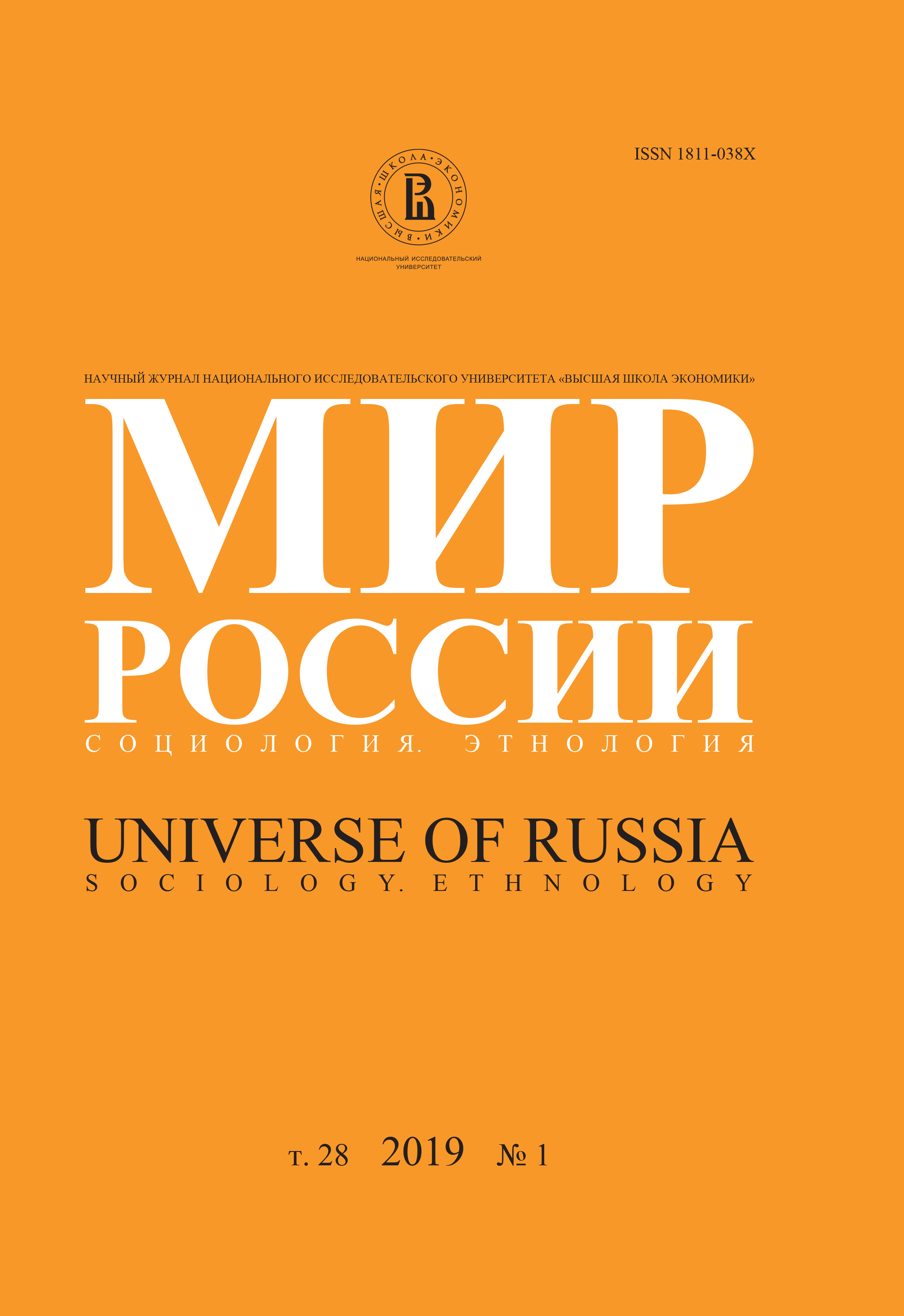Labor Protests in Russia: Territorial and Sectoral Localization, 2008–2016
Abstract
Petr Bizyukov – Associate Research of the Russian Academy of Sciences, Sociological Institute of the Russian Academy of Sciences – branch of the Federal Research Sociological
Center of the Russian Academy of Sciences. Address: 25/14, 7 Krasnoarmejskaya St., St. Petersburg, 190005, Russian Federation. E-mail: petersk@yandex.ru
Citation: Bizyukov P. (2019) Labor Protests in Russia: Territorial and Sectoral Localization, 2008–2016. Mir Rossii, vol. 28, no 1, pp. 75–100 (in Russian). DOI: 10.17323/1811-038X-2019-28-1-75-100
This article analyzes the spread of labor protests in a geographical sense and in the sense of affecting a wider array of economic sectors. It is based on data from the monitoring
of labor protests which was launched by the Center of Social and Labor Rights in 2008. Labor protests are defined as public conflicts which employees use to protect their interests. The article introduces the methodology of the monitoring and the main indicators that are used for describing the protests. According to the monitoring, the number of labor protests more than tripled over the 108 months of observation (from January 2008 to December 2016), with a total of 2,516 protests included in the database. A comparison is made of the dynamics of labor protests in Russia with two other post-Soviet countries – Georgia and Kyrgyzstan – where similar monitorings were conducted in 2016.
The regional pattern of the spread of protests suggests that it is close to its maximum. The average annual number of protests has been consistently increasing in most regions. The sectoral spread has also changed significantly. In recent years, worker protest activity has intensified in the industries where informal employment is widespread, and where institutional mechanisms for regulating labor relations (i.e. trade unions) are either absent or poorly developed. In contrast, the intensity of protests in manufacturing industries and in large enterprises decreased, and the data also show that trade unions in these industries actively participate in resolving conflicts. The decline in the number of protests in industrial sectors has led to a decrease in the inclusion of trade unions in the protests. This increases the number of spontaneous protests in economic sectors where there are no trade unions or where they are weak (education, healthcare, culture, science). The authors conclude that trade unions are capable of reducing tension by effectively using the law and mechanisms of social partnership.






